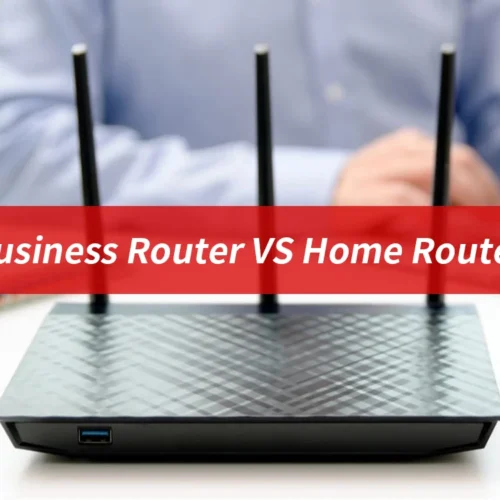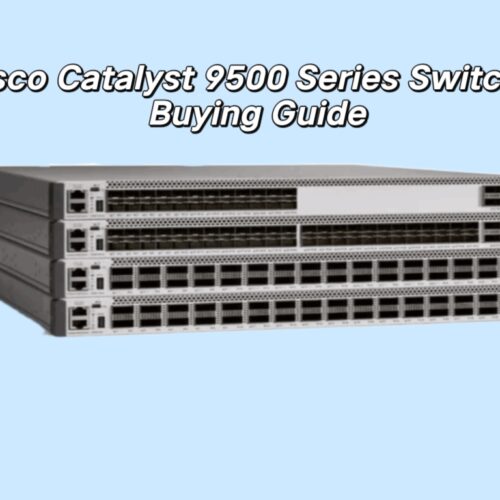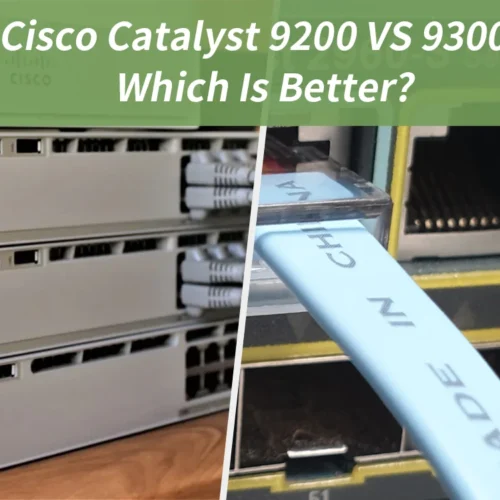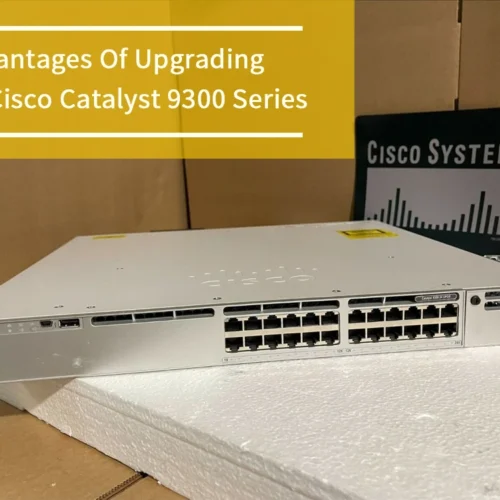Introduction:
The Cisco 9200 and 9300 series switches have different features. This makes them suitable for different environments. The Cisco 9200 series is the entry-level for the Catalyst 9000 family, a modular switch. It’s a cost-effective solution for smaller networks. The Cisco 9300 series is more expensive than the 9200. However, it has more features that are suitable for more extensive networks. In this article, we will thoroughly discuss each series’s features. Plus, what do they do best, and a list of C9200 vs cisco catalyst 9300 comparisons you need to know. Let’s start!
What is Cisco Catalyst 9200?
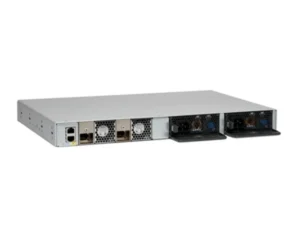
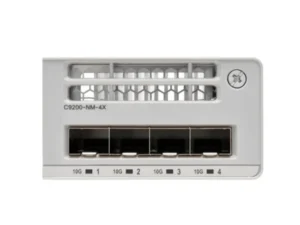
According to the Cisco Catalyst 9200 datasheet, Cisco Catalyst 9200 is a series of switches. It is used to manage high-performance networks. It can provide the enterprise with the flexibility, scalability, and reliability needed. Cisco Catalyst 9200 Series Switches is a high-performance hardware platform that provides the enterprise with the flexibility, scalability, and reliability they need. To efficiently grow and scale their business. The Cisco Switch Catalyst 9200 has the right features, performance, and price to help organizations reduce Ethernet-related costs. In addition, this platform offers a low total cost of ownership (TCO) for power consumption and management overhead. The centralization of this platform provides a point of control and management.
This is most beneficial in large operations with multiple PCBs. This centralization also provides an opportunity to carry a single set of updated and up-to-date configuration information and all the needed documentation.
What is Cisco Catalyst 9300?
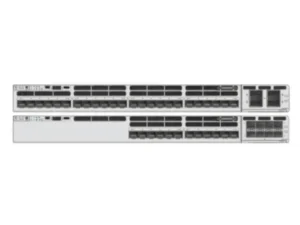

According to Cisco Catalyst 9300 datasheet, Cisco Catalyst 9300 series switch is a high-end switch with a modular design and the capability to scale. You can use it in large operations with multiple PCBs, providing an opportunity for centralization. The modular design of the Cisco Catalyst 9300 allows it to be scalable, which is beneficial for large operations with multiple PCBs. Moreover, this centralization also provides an opportunity to carry out any maintenance or upgrades in one place. The first series of the Cisco C9300 is the C9200, which has a maximum capacity of 1.4 terabits per second. The company made it for smaller networks with less demanding requirements. The upper series is the C9400, which has a maximum capacity of 2.2 terabits per second. The company made it for more extensive networks with more demanding requirements.
Main Differences Between Cisco Catalyst 9200 vs 9300
The Cisco C9200 and Cisco Catalyst 9300 are two of the most popular enterprise-level switches on the market. They are both made by the same company, but there are some key differences between them.
Throughput
The main difference is that the Cisco Catalyst 9300 has a higher throughput than the Cisco Catalyst 9200. This means that it can handle more data at once. It is important for large companies with high bandwidth needs. The other difference is that it has higher memory storage than the C9200, which can be useful if you need to store more data or need to process more complex information.
Pricing
The Cisco Catalyst 9200 is a high-end switch with a price tag of $500. It has five gigabit Ethernet ports and two 10 gigabit Ethernet ports. The C9300, on the other hand, is a more expensive switch. It has six gigabit Ethernet ports and four 10 gigabit Ethernet ports. The Cisco Catalyst 9300 also includes an internal power supply, which is not the case with the C9200.
Capacity
- The Cisco Cisco Catalyst 9200 is the flagship of the Cisco Catalyst 9000. It has a capacity of up to 2.5 Tbps and can provide up to 1.5 million IOPS.
- The Cisco Catalyst 9300 is the successor of the C9200 and has a capacity of up to 4 Tbps and can provide up to 3 million IOPS.
Stacking
The key difference between these two switches is that while both are stackable, only the Cisco Catalyst 9300 is stackable with another switch in order to create a redundant architecture. The Cisco Catalyst 9200 stacking is possible through Cisco’s StackWise-160 technology. However, StackWise-480 technology enables better stacking of the 9300 series.
Configuration
The Cisco Catalyst 9200 is a fixed configuration, a line-rate switch with two Gigabit Ethernet interfaces and two SFP slots. The Cisco Catalyst 9300 is a modular switch that provides the same line-rate routing capability as the Cisco Catalyst 9200. However, you can configure it in various ways to provide up to four Gigabit Ethernet interfaces and four SFP slots.
Capabilities
The Cisco Catalyst 9300 has more expansion capabilities than Cisco Catalyst 9200 because it is modular. It has four Gigabit Ethernet ports and four SFP slots, whereas the Cisco Catalyst 9200 only has two Gigabit Ethernet ports and two SFP slots.
Ports
Comparatively, the Cisco Catalyst 9300 model has PoE, PoE+, UPOE, and UPOE+, whereas the Cisco Catalyst 9200 model includes 48 ports of full-permanent PoE+ with mGig.
Bandwidth
The Cisco Catalyst 9200 switch offers bandwidth performance in the range of 128 Gbps to 176 Gbps, while the C9300 series offers speeds in the range of 208 Gbps to 640 Gbps. Moreover, the switching capacity range of the Cisco 9200 model is smaller, from 128 Gbps to 176 Gbps, while that of the Cisco Catalyst 9300 model is larger, from 208 Gbps to 640 Gbps. The Cisco C9200 can forward data at a rate of up to 261.9 Mpps, while the Cisco C9300 can do so at a rate of 154.76 Mpps to 476.19 Mpps.
FAQ
What are Cisco’s Newest Models?
Cisco is a leading provider of networking devices and services. They have been the leader in their industry for decades, with many new models being released that is sure to change the way we live and work.
The newest models from Cisco include:
- The Cisco Intelligent Services Gateway (ISG), which provides an intelligent gateway to connect cloud applications for customer service – The Cisco Cloud Hosted Services Platform (CHSP), which provides secure, private, virtualized access to data and applications
- The Cisco Viptela Cloud Access Security Broker (VS-CASB), which secures cloud services in the data center
- The Cisco Intelligent Services Gateway (ISG) is a secure gateway for customers that enables service providers to provide business continuity features of security. It is designed for service providers who want to provide a secure gateway for their customers but do not want or cannot afford to manage physical servers. ISG provides service providers with the ability to offer hosted cloud services without having to worry about operating or maintaining multiple systems or infrastructures.
Which Cisco Switch is the Best One for Your Business, Cisco 9200 vs 9300?
Cisco switches are the most popular networking devices in the world. They are used to provide network connectivity and create a connection between computers and other devices. Cisco switches come in wide different varieties and sizes, which can be confusing for customers.
The Cisco C9200 and C9300 switches are both enterprise-grade. The C9200 is the successor to the popular Cisco Catalyst 9300 series switches, while the Cisco 9300 Catalyst switch is a modular switch with a higher price point.
Is Cisco Catalyst 9300 Series the Ideal Choice for a Complex Network??
Yes, the Cisco Catalyst 9300 series is an ideal choice for a complex network. The switch is designed to be compatible with the most demanding networks and provides powerful security and performance features.
The Cisco Catalyst 9300 series delivers a number of benefits, including:
- Powerful firewall protection
- Advanced security features that protect against threats from the Internet or from within the network, such as intrusion prevention system (IPS)
- Denial of service (DoS) attack prevention
- Web-based protection against malware
- Flexible configuration that can be adapted to different network environments
How Can You Benefit from Cisco IP Storage Solutions?
Cisco IP Storage Solutions are designed to provide a range of benefits, from increased security to improved efficiency and performance.
If you have a Cisco IP Storage Solution, then you can benefit from the following:
- Increased Security: Your data is safer with Cisco IP Storage Solutions. They offer encryption and authentication, which helps prevent unauthorized access.
- Improved Efficiency and Performance: Cisco IP Storage Solutions are designed for high availability, meaning that your data is available at all times without any downtime. This means that your company can continue working without any interruptions.
- Improved Flexibility: Cisco IP Storage Solutions allow you to scale your storage requirements as needed instead of having to purchase an entirely new storage system when your needs change.
Cisco is one of the world’s largest networking companies, providing a wide range of products and services to consumers, businesses, and service providers.
Cisco products are used by customers in more than 170 countries around the world. The company has been a leader in its field for decades, with many new models being released that will change how we live and work.
Can Cisco Catalyst 9200 be stacked with 9300?
No, these two models are not compatible. The 9200 series is a new model and is not compatible with the 9300.
How many Cisco Catalyst 9300 switches can you stack?
Cisco 9300 switches can be stacked in a variety of configurations. The number of switches that can be stacked is dependent on the number of ports and the configuration. The number of Cisco 9300 switches that can be stacked is dependent on the number of ports and the configuration. For example, a stack with two switches, each with 8 ports, can hold up to 32 devices.
How do I install a Cisco 9300 switch to a stack?
Unlike Cisco Catalyst 9200 stack module, the Cisco 9300 is a modular system. The installation process for a 9300 switch varies based on the chassis type. To install a fixed configuration, modular 9300 switches in a stack:
Step 1. Attach the Supervisor Engine module to the chassis.
Step 2. Attach additional modules based on requirements for the stack configuration.
Step 3. Power up and configure any required functionality as appropriate for the application.
For example:
- To connect to a management Ethernet port on a switch, configure the Ethernet Interface module.
- To use an SD card as an image source, configure the Card Reader module.
Conclusion:
The Cisco 9200 and 9300 are both equipped with a number of advanced features that make them ideal for use in a wide range of business contexts. Both LAN switches make it easy for business equipment to connect quickly and securely, so companies don’t have to worry about cyber attacks. The 9200 and 9300 series, once set up, also make it easy for corporations to manage interconnected personnel. Both are highly recommended for businesses that want enterprise-level LAN switches, but the Cisco Catalyst 9200 48 Port is better for smaller businesses.


